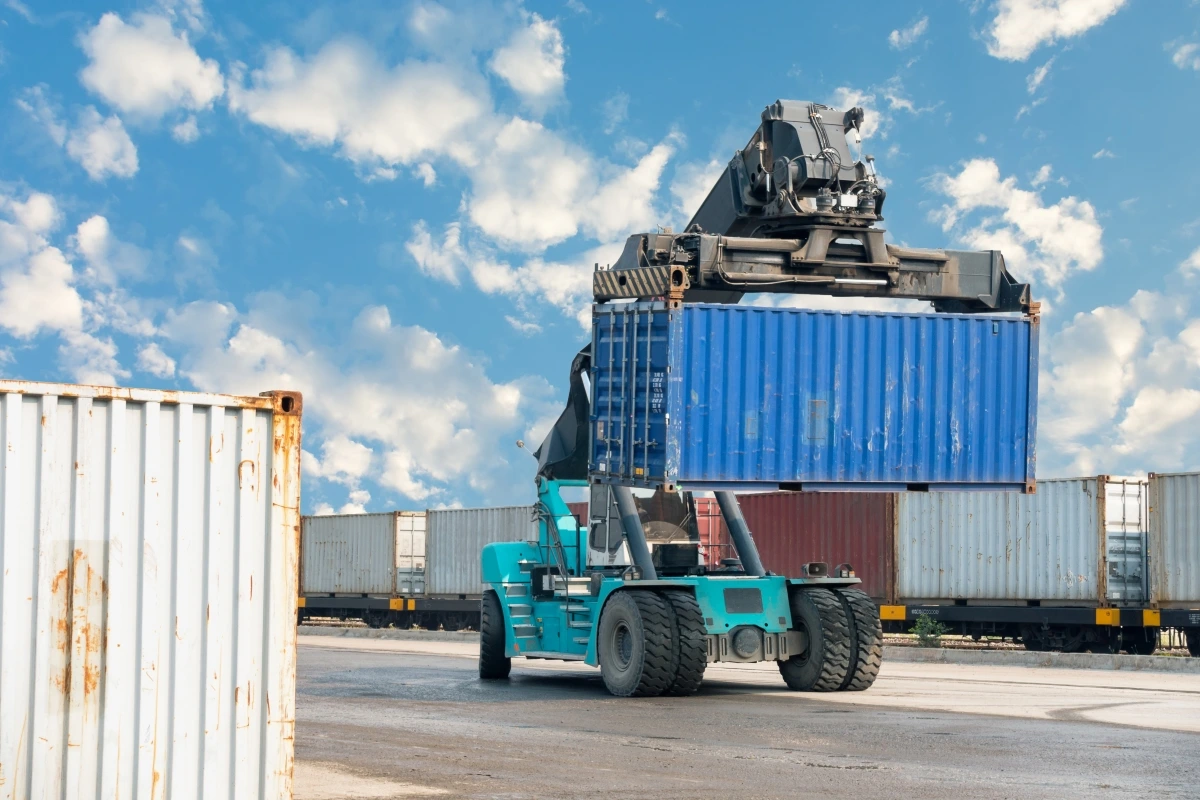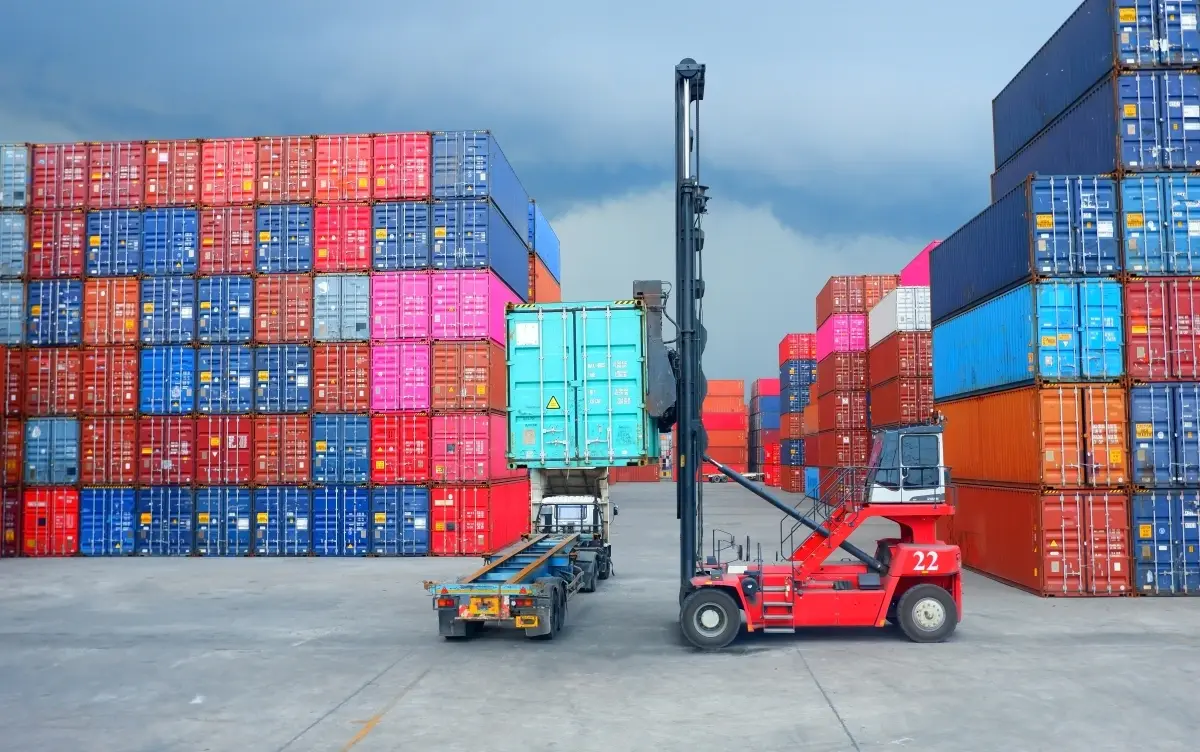
15-09-2025
Get to Know About Stevedoring in Shipping, Process, and Type
Stevedoring is one of the important processes in freight transport. Stevedoring is an activity of loading and unloading cargo at the port, either onto or from vessels. This article discusses stevedores in depth. So, read this article thoroughly!
What Is Stevedoring?
Stevedoring is the process of loading and unloading cargo from ships at ports and vice versa. It is done by stevedores who have specific skills. A stevedore must be professionally certified in operating heavy machines to lift, stack, and unload cargo.
In addition to a license to operate heavy equipment, a stevedore also works at heights and is exposed to risks, such as bad weather, being hit by cargo, exposure to chemicals from cargo, and other hazards. That is why only crews with special skills and certifications can perform stevedoring.
When it comes to stevedoring, you may have heard of cargodoring. Cargodoring and stevedoring may seem similar, but they have different purposes.
Stevedoring is the process of unloading and loading carried out at the dock or port, while cargodoring is delivering cargo from the port to the destination. This means that cargodoring is the next process after stevedoring.
The Main Processes of Stevedoring

Stevedoring is done using heavy machinery, such as cranes, forklifts, and steel slings. To ensure that the process runs smoothly and safely, a stevedore must adhere to the following procedures:
- Loading and unloading cargo: Stevedores will load and unload goods using heavy equipment from the ship to the dock and vice versa.
- Stacking cargo: This process is carried out carefully to prevent the cargo from shifting when loaded onto the ship or during the voyage. In addition, proper stowage will keep the ship stable because it will be balanced. Not only on ships, but also cargo needs to be stowed properly to prevent damage.
- Checking and documenting cargo: While loading the goods, stevedores will check the condition and document important information.
- Storing cargo: Stevedores will store the goods in the warehouse before they are delivered.
- Maintaining equipment: Stevedoring also includes maintaining equipment, especially heavy machinery, to ensure the process runs safely.
Read also: What Is Vessel? Definition, Types, & Difference with Ships
Types of Stevedoring
Stevedoring is divided into several types based on the cargo being loaded and unloaded. Here is the complete information about the types of stevedoring:
1. Bulk Stevedoring
This stevedoring is done to unload and load cargo without packaging, such as wheat, iron ore, and coal. To load them, a stevedore will use a conveyor and grabber.
2. Container Stevedoring
This process loads crates from the dock to the ship and vice versa. Since it involves containers, stevedores must use cranes to load them safely.
3. Dangerous Goods Stevedoring
Dangerous goods stevedoring is done under special procedures due to high risks. Dangerous goods include chemicals, flammable materials, explosives, and other hazardous substances.
4. Ro-Ro Stevedoring
This type of stevedoring is carried out on Ro-Ro, or roll-on roll-off, ships that carry cargo in the form of vehicles. Usually, vehicles are unloaded using a ramp (a sloping structure attached to the end of the ship).
5. Offshore Stevedoring
This type of stevedoring is used to unload and load exploration products, including crude oil and natural gas. A stevedore working offshore must be able to work in an unpredictable environment and weather conditions.
Benefits of Stevedoring

Stevedoring offers many benefits for cargo shipping at ports or other terminals, such as:
1. Handling Cargo Safely
Stevedoring ensures that cargo is transported safely, including arranging it properly to prevent damage to goods or an unstable ship. The stevedoring process also pays close attention to occupational health and safety policies to ensure that all processes are carried out safely and that no stevedores are injured.
2. Saving Operational Cost
Stevedores must stack goods efficiently to maximize the entire container space. This will save logistics costs and reduce waiting time at the port since no cargo is left behind.
3. Developing Infrastructure
In some cases, the cargo could be bulk, container, food, or other types. As a result, the stevedoring infrastructure must be properly developed to make the loading and unloading efficient and safe.
4. Reducing Loss
Stevedores are certified skilled workers whose duties include maximizing space on ships and in warehouses. This reduces the risk of loss or damage to goods, lowering company losses.
Read also: 7 Port Functions for the Economy and Trading, Must Note!
Differences Between Stevedoring and Freight Handling
In addition to cargodoring, stevedoring is also often associated with freight handling. Freight handling is the process of moving, storing, and organizing cargo during the shipping process.
This means that the freight handling process also includes stevedoring, which involves unloading or loading, storung, and documentation of cargo. Freight handling is handled by freight handlers.
A freight handler may also be a stevedore since they are in charge of loading, unloading, organizing, and storing goods in a warehouse for subsequent transportation.
However, a stevedore cannot be a freight handler because stevedores are limited to loading and unloading goods, while freight handlers also take care of cargo labeling and coordinate the next stage of transportation.
That concludes the information about stevedoring in the shipping process. Stevedoring is one of the crucial processes in logistics. This process must be done appropriately and in a standardized manner, especially inchemical stevedoring.
Regarding chemical logistics, you can rely on Chandra Asri Group to ship chemicals and gas by land or ocean.
Chandra Asri Group, through PT Chandra Shipping International and PT Marina Indah Maritim, offers logistics solutions with nine vessels with a capacity of up to 106,650 DWT, which may increase over time.
Furthermore, through PT SCG Barito Logistics and PT Chandra Cold Chain, Chandra Asri Group offers land logistics services with a fleet of 155 trucks and integrated warehouses.
Ensure that the chemical and gas delivery is safe with Chandra Asri Group!
Read also: Logistics Management: Functions, Benefits, & Main Components